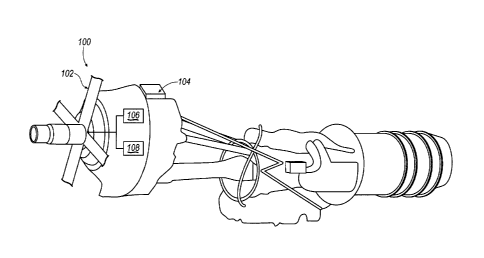Some of the information on this Web page has been provided by external sources. The Government of Canada is not responsible for the accuracy, reliability or currency of the information supplied by external sources. Users wishing to rely upon this information should consult directly with the source of the information. Content provided by external sources is not subject to official languages, privacy and accessibility requirements.
Any discrepancies in the text and image of the Claims and Abstract are due to differing posting times. Text of the Claims and Abstract are posted:
| (12) Patent: | (11) CA 2915896 |
|---|---|
| (54) English Title: | CONE BRAKE FRICTION SURFACE COATING |
| (54) French Title: | REVETEMENT DE SURFACE DE FRICTION DE FREIN A CONE |
| Status: | Granted |
| (51) International Patent Classification (IPC): |
|
|---|---|
| (72) Inventors : |
|
| (73) Owners : |
|
| (71) Applicants : |
|
| (74) Agent: | GOWLING WLG (CANADA) LLP |
| (74) Associate agent: | |
| (45) Issued: | 2021-08-03 |
| (22) Filed Date: | 2015-12-21 |
| (41) Open to Public Inspection: | 2016-07-13 |
| Examination requested: | 2020-12-04 |
| Availability of licence: | N/A |
| (25) Language of filing: | English |
| Patent Cooperation Treaty (PCT): | No |
|---|
| (30) Application Priority Data: | ||||||
|---|---|---|---|---|---|---|
|
An exemplary cone brake device includes a brake drum and a thermal sprayed coating deposited and bonded to the outer surface. The thermal sprayed coating is configured to engage a friction lining when one of the brake drum and the friction element is moved toward the other of the brake drum and the friction element, so as to decrease the speed of an aerospace propeller.
Un dispositif de frein conique en exemple comprend un tambour de frein et un revêtement métallisé au pistolet et lié à la surface extérieure. Le revêtement par métallisation au pistolet est configuré pour entrer en contact avec une garniture de friction lorsque le tambour de frein ou lélément de frottement est déplacé vers lautre, de sorte à réduire la vitesse dune hélice aérospatiale.
Note: Claims are shown in the official language in which they were submitted.
Note: Descriptions are shown in the official language in which they were submitted.

For a clearer understanding of the status of the application/patent presented on this page, the site Disclaimer , as well as the definitions for Patent , Administrative Status , Maintenance Fee and Payment History should be consulted.
| Title | Date |
|---|---|
| Forecasted Issue Date | 2021-08-03 |
| (22) Filed | 2015-12-21 |
| (41) Open to Public Inspection | 2016-07-13 |
| Examination Requested | 2020-12-04 |
| (45) Issued | 2021-08-03 |
There is no abandonment history.
Last Payment of $210.51 was received on 2023-12-08
Upcoming maintenance fee amounts
| Description | Date | Amount |
|---|---|---|
| Next Payment if standard fee | 2024-12-23 | $277.00 |
| Next Payment if small entity fee | 2024-12-23 | $100.00 |
Note : If the full payment has not been received on or before the date indicated, a further fee may be required which may be one of the following
Patent fees are adjusted on the 1st of January every year. The amounts above are the current amounts if received by December 31 of the current year.
Please refer to the CIPO
Patent Fees
web page to see all current fee amounts.
| Fee Type | Anniversary Year | Due Date | Amount Paid | Paid Date |
|---|---|---|---|---|
| Registration of a document - section 124 | $100.00 | 2015-12-21 | ||
| Application Fee | $400.00 | 2015-12-21 | ||
| Maintenance Fee - Application - New Act | 2 | 2017-12-21 | $100.00 | 2017-12-04 |
| Maintenance Fee - Application - New Act | 3 | 2018-12-21 | $100.00 | 2018-12-04 |
| Maintenance Fee - Application - New Act | 4 | 2019-12-23 | $100.00 | 2019-12-13 |
| Request for Examination | 2020-12-21 | $800.00 | 2020-12-04 | |
| Maintenance Fee - Application - New Act | 5 | 2020-12-21 | $200.00 | 2020-12-08 |
| Final Fee | 2021-08-26 | $306.00 | 2021-06-15 | |
| Maintenance Fee - Patent - New Act | 6 | 2021-12-21 | $204.00 | 2021-12-07 |
| Maintenance Fee - Patent - New Act | 7 | 2022-12-21 | $203.59 | 2022-12-07 |
| Maintenance Fee - Patent - New Act | 8 | 2023-12-21 | $210.51 | 2023-12-08 |
Note: Records showing the ownership history in alphabetical order.
| Current Owners on Record |
|---|
| ROLLS-ROYCE CORPORATION |
| Past Owners on Record |
|---|
| None |